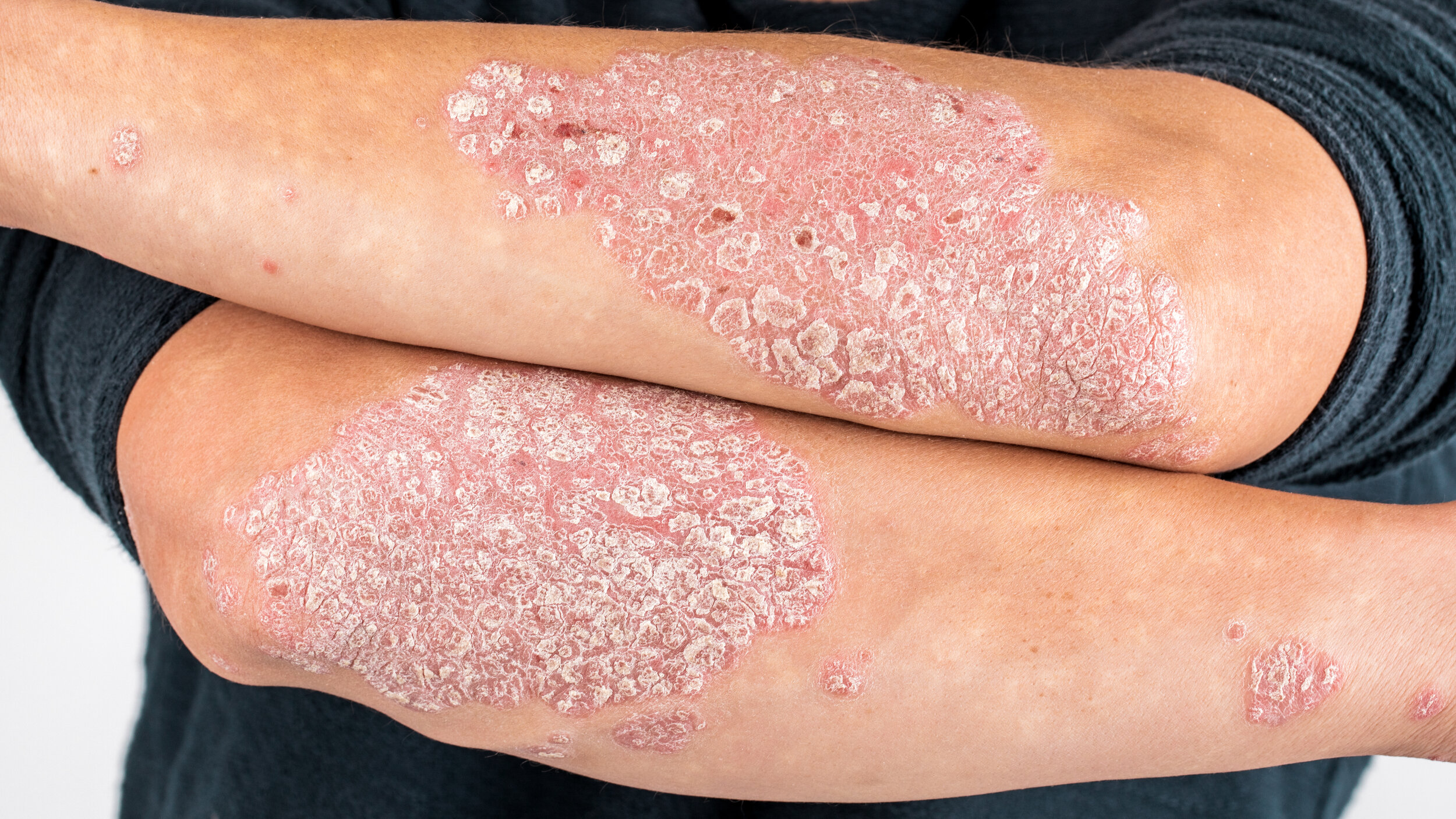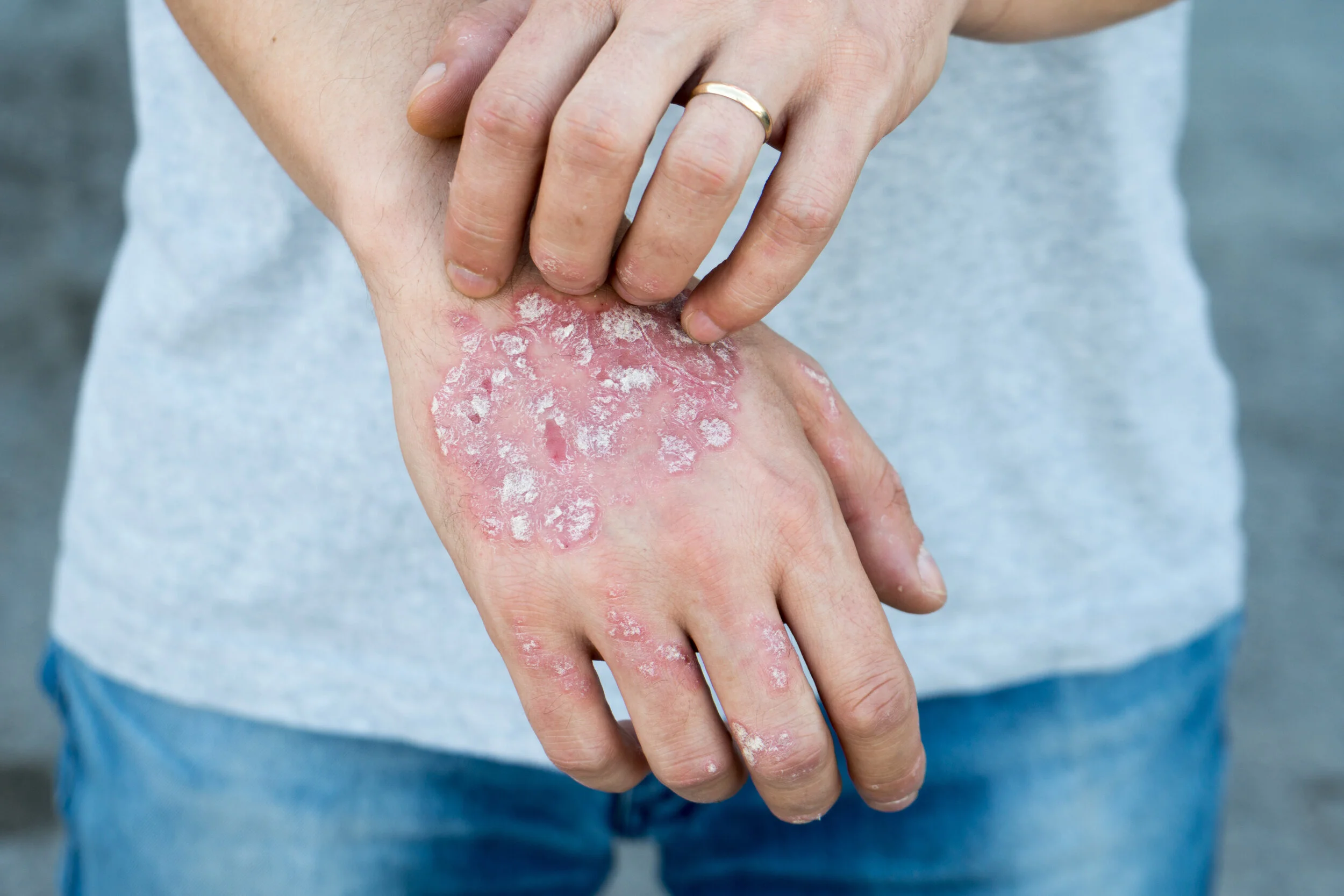Manage and Understand Your Psoriasis
Often illness is a private matter - no one's business but your own. Unlike heart disease or diabetes however, skin conditions can be difficult to hide and are often misunderstood by those who see them, making conditions like psoriasis challenging to combat.
Categorized as a chronic autoimmune disease, psoriasis occurs when white blood cells attack skin cells. While a normal skin cell cycle spans a month, this attack shortens the cell’s lifespan. Cells replenish too quickly and cause a rapid buildup that results in scaling on the skin’s surface.
By understanding the symptoms, various forms, and treatment options, you can reduce the impact psoriasis has on your life.
Reading the Signs
Psoriasis typically presents in joints like the elbows and knees, but is also common on the hands, feet, neck, scalp, and face. Though symptoms differ from person to person, here are the most common to look for:
Red, raised, inflamed patches of skin
Whitish-silver scales/plaques
Dry skin that may crack and bleed
Soreness surrounding patches
Itching, burning sensations
Thick, pitted nails
Painful, swollen joints
Not everyone has all of the above and symptoms can depend on the form of psoriasis.
The Five Forms
Though most people experience the first type on this list, it is helpful to know what form of psoriasis you are experiencing. Symptoms vary and so can treatment options.
Plaque Psoriasis - 80% of those with psoriasis fit in this category and it can be identified by the usual red, inflamed patches covered with whitish-silver scales commonly on the elbows, knees, and scalp.
Guttate Psoriasis - Common in childhood, this form of psoriasis results in small pink spots, usually on the torso, arms, and legs. These spots are rarely thick or raised like those of plaque.
Pustular Psoriasis - These white, pus-filled blisters surrounded by areas of red, inflamed skin are only seen in adults. Typically localized to smaller areas, such as the feet and hands, this form can also be widespread.
Inverse Psoriasis - Bright areas of red, shiny, inflamed skin is the main symptom of this type. It usually develops under armpits, breasts, in the groin, and around skinfolds of the genitals.
Erythrodermic Psoriasis - Of all the forms of psoriasis, this one is the most rare and is often extremely severe. Covering large sections of the body, the skin will appear sunburned. In this case, scales will slough off in large sections and sheets. A person with erythrodermic psoriasis will commonly run a fever and become very sick. Because this type can be life-threatening, see your doctor immediately.
Treatment Options
At this point in medical science, most autoimmune diseases like psoriasis can only be controlled. This is accomplished through regular treatment (topical, oral, or internal medications), phototherapy, and lifestyle adjustments (reduced stress, good skincare and hygiene, and a healthy diet). Most important of all, however, is trigger management.
Psoriasis goes through “cycles” of symptoms. The flare-ups occur when psoriasis is triggered by something either environmental or physical. These vary from person to person. Common triggers include:
Cold temperatures
Excessive alcohol
Smoking
Another autoimmune disease
Infections that weaken the immune system
Skin injuries
Excessive stress or tension
Certain medications
Understanding your cycle and avoiding triggers is an essential part of managing psoriasis and should be practiced in conjunction with proper treatment and a healthy lifestyle.
No matter your psoriasis type, you are not alone. Psoriasis afflicts around 8 million Americans. Though not contagious, this skin condition is often frustrating and embarrassing. A cure is still in the future, but an active, full life is possible today. Psoriasis doesn’t have to slow you down. Talk to your dermatologist immediately about your options and remember that our staff at New River Dermatology is always ready to help you and your skin find a healthier tomorrow.


